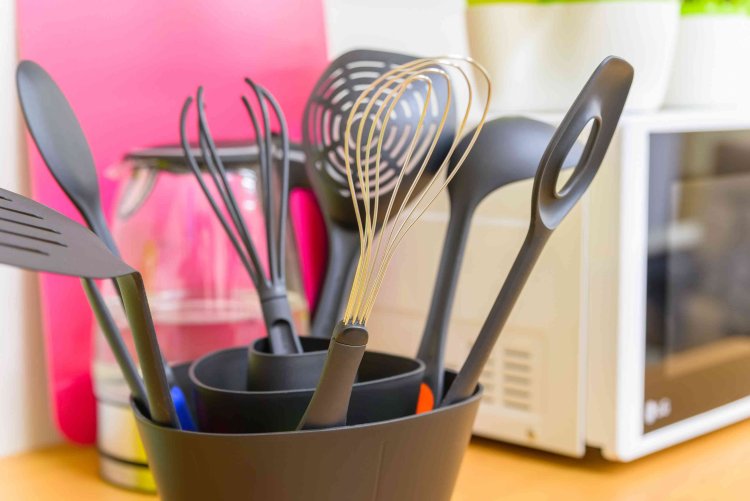Your Black Plastic Cooking Utensils May Contain Banned Flame Retardants
A recent study showed alarming rates of banned flame retardants in black plastic cooking tools.

A recent study showed alarming rates of banned flame retardants in black plastic cooking tools. Simply Recipes / Adobe Stock:max_bytes(150000):strip_icc():format(jpeg)/Simply-Recipes-Plastic-Cooking-Utensils-LEAD-OPTION-02-3b24a6a1b0c14ed8864abd58e61ac6f3.jpeg)
There’s one very common kitchen item that may contain dangerous chemicals, and chances are you don’t know about it.
According to a recent study published in Chemosphere, two banned flame retardants—brominated flame retardants (BFRs) and organophosphate flame retardants (OPFRs)—have been detected in black plastic cooking utensils at surprisingly high levels.
One particularly troubling flame retardant was found in these kitchen tools: Deca-BDE. This particular flame retardant was once commonly used in electronics but was banned by the European Union in 2006 and the United States in 2007, making it very concerning that it’s showing up in cooking utensils decades later.
To understand more, I reached out to one of the study’s authors, Megan Liu, and she explained exactly why the utensils have such alarmingly high levels of the chemicals and how we can avoid exposure. Simply Recipes / Adobe Stock
Why Banned Flame Retardants Have Been Found in Black Plastic Cooking Utensils
“Toxic flame retardants are ending up in black plastic household products because of deeply inadequate rules on hazardous chemicals and dirty plastic recycling,” explains Liu. “The toxic flame retardants, linked to cancer and infertility, are allowed to be put into the black plastic that is used for electronics.” Those plastic pieces used for electronics are then recycled into plastic parts for a number of household items like toys, food packaging, and spatulas.
This contamination is dangerous because, Liu says, “These flame retardants are associated with a variety of impacts on human health, including carcinogenicity, endocrine disruption, neurotoxicity, and reproductive and developmental toxicity.”
The toxic chemicals can leach out of plastics and be found in the surrounding air or dust. Furthermore, when found in cooking tools, these chemicals “can leach out of kitchen utensils into food,” warns Liu. “It’s alarming to think that we could be eating flame retardants.”
The best way to avoid exposure to these chemicals is by avoiding plastic as much as possible, particularly kitchen utensils made from black plastic. Liu notes that her study did not test all black plastic kitchen items, and therefore, there’s no certainty that every single black plastic utensil is contaminated; but, in order to ensure safety, she suggests replacing plastic utensils in your kitchen with stainless steel or wood options. “Who knows where these chemicals could be hiding?”
What's Your Reaction?
















